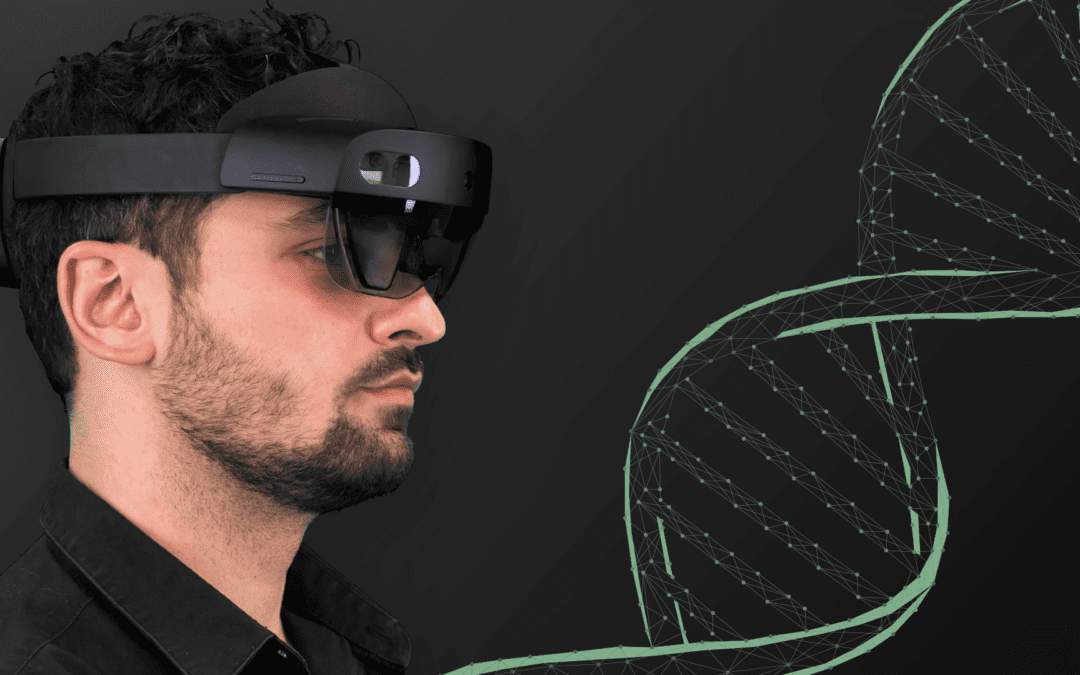What once looked like an interesting concept and kind of sci-fi scenario have eventually become relevant and promising. VR/MR use in medicine is currently one of the focal points of innovators interested in healthcare. That may be because of our evolving faith in professional medical devices that help doctors and surgeons more frequently now. We’ve learned that machines are just tools in the hands of the qualified and focused specialist. It is their role to use them properly – it doesn’t matter if we are talking about robotics (such as the DaVinci project) or about the virtual and mixed reality systems.
Immersive tools are not the future, but a present-day solution. We can see MR and VR in hospitals – medical laboratories, ER, OR, and training facilities. But what are the most recent medical VR/MR use cases? Read on and find out.
Patients first. VR innovation in healthcare
Before we focus on the specialists, let’s not forget about the patients. It is easy to imagine how virtual reality may support them through the exhausting process of physical therapy – after surgery or severe trauma. With virtual reality, doctors are able to conduct the treatment with precise supervision of 6 DoF VR systems that can track user’s movements and give hints about the different exercises.
The systems can also measure a patient’s progress, considering the time in which he or she completes the course or the accuracy of activities. Virtual reality can also positively impact individual patients’ focus, as the virtual applications create an optimal environment for users to act.
More than that, with VR simulators, hospitals can deal with patients’ problems and fears about the treatment methods by slowly familiarizing them with the same exact procedures in the virtual world. The technology can decrease the anxiety of future patients and educate them about doctors’ activities.
Digital reconstruction and medical training in VR
Now, let’s hop into the shoes of a doctor who is looking for a precise and practical training tool. The truth is that medical personnel should be learning about new treatment methods and work techniques throughout the whole career. Such innovation in medicine as VR training (already provided by companies like Osso VR) can be perfect for a constantly growing field of knowledge. Developers can adjust the application to the modern-day state of the science.
Above that, immersive simulators are ideal for producing convincing scenarios with real-life physics and mechanics, such as blood pressure, different tissues’ properties, or even more advanced, cellular aspects of the human body.
VR technology is also suitable for digital reconstructions of scans and photographs, as we can learn from The George Washington University Hospital’s case. In his article, Marcin Klimek wrote about it, pointing out that
(…) the team of clinicians and researchers have reconfigured the scans of 27 COVID-19 patients in VR analyzing them alongside lab work. The correlation between lung damage, certain elevated lab values, and finally patient outcomes were found during the study. That’s just one of the examples showing adoption for VR in the medical environment and not the only one definitely.
As you can see, the future of VR in healthcare is happening right before our very eyes.
Mixed Reality innovation in healthcare – a big opportunity
Virtual Reality is definitely a trend now in healthcare, but what about mixed reality technology? We can agree that it’s much less recognized because of its novelty status, but is it still considered experimental? Well, for us it’s more of a ticking bomb.
Mixed Reality means consultants and surgeons can see and interact with 3D objects displayed in their everyday environment, like an OR or doctor’s office. Right now, devices like Microsoft Holo Lens 2 enable the personnel to extend their perception and take a closer look at a three-dimensional scan or prototype of a prosthesis.
The innovation of MR also means immersive teamwork, as specialists can meet together and see the same 3D scans, collaborating and looking for the best medical solutions. MR objects can also serve as digital twins of patients, allowing doctors to check their methods on them first.
And that’s how we see the current VR/MR role in healthcare. It is a truly exciting and effective way of empowering medical staff to do even more groundbreaking work. We feel that the sector will grow towards immersive solutions. And if you want to know more about Giant Lazer’s approach to XR technology, visit our Services page.

